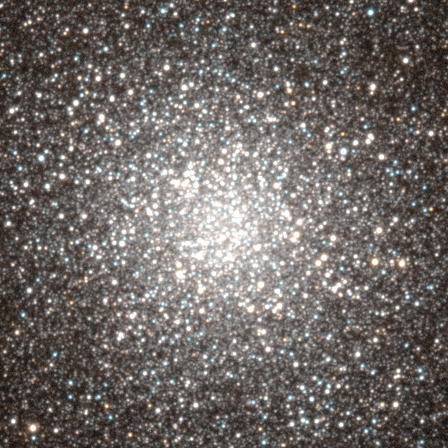
The globular cluster Messier 22 (NGC 6656) in Sagittarius, shown in a color composite produced from a 3-minute blue-light exposure and a 20-second red one, with a Tektronix 2048x2048 CCD at the 2.1-meter telescope of Kitt Peak National Observatory by Bill Keel and Lisa Frattare. North is at the top and east to the left, for direct comparison with a chart or eyepiece view. The image has been block-averaged by a factor of two for this presentation (and another factor of two as shown above), which uses a logarithmic intensity transformation to preserve information across a wide dynamic range. The field is 9.1 arcminutes square. Many red giants stand out in both color and brightness, which is one reason the red exposure had to be so short to avoid saturating them and producing charge-bleeding trails across the image.
M22 is one of the most spectacular globular clusters in our sky, and has become one of my favorites for public viewing sessions for the couple of hours a night during the summer when it is well placed from mid-northern latitudes. It is a prominent binocular object, and a naked-eye one under good conditions. M22 was the site of some puzzling events reported by Kailash Sahu and coworkers, in which several normally constant stars brightned by 0.7 magnitude for less than a day. Gravitational lensing interpretations seem to require unlikely things such as rich clusters of free-floating planets; the explanation remains unclear. M22 is also rich in ordinary variable stars.
Last changes: 7/2003 © 2003